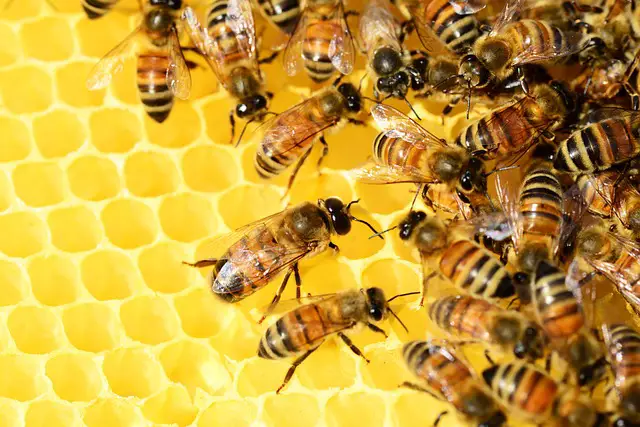A nest is a shelter for animals, often built by a single organism. A hive is a structure for communal living, typically for bees, built by the collective efforts of many individuals.
TL;DR Nest Vs. Hive
Nests and hives are distinct structures in the animal kingdom. A nest is an individual shelter, crafted by a single organism for protection, nurturing offspring, or providing a home. Common among birds and some mammals, nests vary widely in design and materials.
A hive is a communal dwelling primarily associated with social insects like bees. Built through collective efforts, a hive serves as a complex system for the colony’s survival, housing numerous individuals, storing food, and facilitating reproduction. Unlike nests, hives exemplify collaborative construction, embodying the intricate social dynamics of species like honeybees or wasps.
What is a Nest?

A nest is a specialized structure built by animals for shelter, protection, and rearing offspring. This architectural creation serves a vital role in the life cycles of various species, predominantly birds but also some mammals, insects, and reptiles. Nests vary widely in design, materials, and location, reflecting the specific needs and behaviors of the builder.
Birds, for instance, construct nests from a diverse range of materials such as twigs, leaves, grass, feathers, and even human-made objects. The nest’s purpose ranges from providing a secure environment for laying and incubating eggs to sheltering and nurturing the young. Ground-nesting birds create depressions in the earth, while tree-dwellers fashion intricate structures among branches.
Nests showcase the remarkable adaptability and ingenuity of animals, adapted to their environment and ecological niche. Some species, like the weaver birds, intricately weave nests with precision. The architectural diversity of nests is a testament to the evolutionary strategies developed by organisms to ensure the survival of their progeny and the continuation of their species. Studying nests not only provides insights into animal behavior but also highlights the interconnectedness of creatures with their surroundings.
What is a Hive?

A hive is a communal dwelling, typically associated with social insects such as bees, wasps, and ants. Unlike individual nests, a hive is a collective effort, serving as the central hub for the entire colony. Bees, for example, construct hives to house a highly organized community with specific roles for worker bees, drones, and a queen.
The structure of a hive is meticulously designed to accommodate various functions crucial for the survival of the colony. It consists of hexagonal cells made of beeswax, providing storage for food, space for developing larvae, and chambers for the queen to lay eggs. The hive is a dynamic entity, reflecting the intricate social structure and cooperative behavior of the insect society.
Hives are not limited to bees; various wasp species also construct elaborate structures for their colonies. The complex architecture of a hive serves as a testament to the sophisticated communication and organization within these insect communities. Studying hives not only unveils the fascinating world of social insects but also offers insights into the evolutionary adaptations that enable these colonies to thrive and perpetuate their species.
Nest Vs. Hive – Key differences
| Aspect | Nest | Hive |
|---|---|---|
| Builder | Typically built by a single organism | Constructed collectively by a community of individuals |
| Examples | Birds, some mammals, reptiles, insects | Bees, wasps, ants |
| Purpose | Shelter, protection, rearing offspring | Communal dwelling for the survival of the colony |
| Construction | Varies widely in design and materials | Highly organized structure with specific functions |
| Materials | Twigs, leaves, grass, feathers, etc. | Beeswax, propolis, and other materials in bee hives |
| Social Structure | Individual or family unit | Complex social organization with roles for workers, drones, and a queen |
| Location | Tree branches, on the ground, etc. | Trees, cavities, or man-made structures for bees; various locations for wasps and ants |
| Examples in Nature | Bird nests, squirrel nests, termite mounds | Honeybee hives, wasp nests, ant colonies |
Image Credits
Featured Image By – Willfried Wende from Pixabay
Image 1 By – homecare119 from Pixabay
Image 2 By – PollyDot from Pixabay








